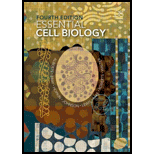
Concept explainers
A.
To explain: Why are there such large differences between the synonymous and non-synonymous rates of
Concept introduction:
A non-synonymous substitution is a nucleotide mutation that alters the amino acid sequence of a protein. It is contrasted with synonymous substitution or silent mutation, which do not alter the amino acid sequences. In non-synonymous mutations, there is usually an insertion or deletion of a single nucleotide base in the sequence during transcription when the messenger RNA is copying the DNA. This always results in frameshift mutation. On the other hand, in synonymous substitution, the newly substituted base also results in a codon exactly synonymous with the actual one. So it would not generate any sort of mutation rather they produce the exact amino acid.
B.
To explain: If the rates of synonymous changes are about the same for all genes, how is it possible for the histone H3 gene to resist so effectively those nucleotide changes that alter its amino acid sequence?
Concept introduction:
A non-synonymous substitution is a nucleotide mutation that alters the amino acid sequence of a protein. It is contrasted with synonymous substitution or silent mutation, which do not alter the amino acid sequences. In non-synonymous mutations, there is usually an insertion or deletion of a single nucleotide base in the sequence during transcription when the messenger RNA is copying the DNA. This always results in frameshift mutation. On the other hand, in synonymous substitution, the newly substituted base also results in a codon exactly synonymous with the actual one. So it would not generate any sort of mutation rather they produce the exact amino acid.
C.
To explain: What feature of the H3 protein argues against the highly privileged nature of this protein?
Concept introduction:
A non-synonymous substitution is a nucleotide mutation that alters the amino acid sequence of a protein. It is contrasted with synonymous substitution or silent mutation, which do not alter the amino acid sequences. In non-synonymous mutations, there is usually an insertion or deletion of a single nucleotide base in the sequence during transcription when the messenger RNA is copying the DNA. This always results in frameshift mutation. On the other hand, in synonymous substitution, the newly substituted base also results in a codon exactly synonymous with the actual one. So it would not generate any sort of mutation rather they produce the exact amino acid.
Want to see the full answer?
Check out a sample textbook solution
Chapter 9 Solutions
Essential Cell Biology
- Outline the negative feedback loop that allows us to maintain a healthy water concentration in our blood. You may use diagram if you wisharrow_forwardGive examples of fat soluble and non-fat soluble hormonesarrow_forwardJust click view full document and register so you can see the whole document. how do i access this. following from the previous question; https://www.bartleby.com/questions-and-answers/hi-hi-with-this-unit-assessment-psy4406-tp4-report-assessment-material-case-stydu-ms-alecia-moore.-o/5e09906a-5101-4297-a8f7-49449b0bb5a7. on Google this image comes up and i have signed/ payed for the service and unable to access the full document. are you able to copy and past to this response. please see the screenshot from google page. unfortunality its not allowing me attch the image can you please show me the mathmetic calculation/ workout for the reult sectionarrow_forward
- Skryf n kortkuns van die Egyptians pyramids vertel ñ story. Maximum 500 woordearrow_forward1.)What cross will result in half homozygous dominant offspring and half heterozygous offspring? 2.) What cross will result in all heterozygous offspring?arrow_forward1.Steroids like testosterone and estrogen are nonpolar and large (~18 carbons). Steroids diffuse through membranes without transporters. Compare and contrast the remaining substances and circle the three substances that can diffuse through a membrane the fastest, without a transporter. Put a square around the other substance that can also diffuse through a membrane (1000x slower but also without a transporter). Molecule Steroid H+ CO₂ Glucose (C6H12O6) H₂O Na+ N₂ Size (Small/Big) Big Nonpolar/Polar/ Nonpolar lonizedarrow_forward
- what are the answer from the bookarrow_forwardwhat is lung cancer why plants removes liquid water intead water vapoursarrow_forward*Example 2: Tracing the path of an autosomal dominant trait Trait: Neurofibromatosis Forms of the trait: The dominant form is neurofibromatosis, caused by the production of an abnormal form of the protein neurofibromin. Affected individuals show spots of abnormal skin pigmentation and non-cancerous tumors that can interfere with the nervous system and cause blindness. Some tumors can convert to a cancerous form. i The recessive form is a normal protein - in other words, no neurofibromatosis.moovi A typical pedigree for a family that carries neurofibromatosis is shown below. Note that carriers are not indicated with half-colored shapes in this chart. Use the letter "N" to indicate the dominant neurofibromatosis allele, and the letter "n" for the normal allele. Nn nn nn 2 nn Nn A 3 N-arrow_forward
 Human Anatomy & Physiology (11th Edition)BiologyISBN:9780134580999Author:Elaine N. Marieb, Katja N. HoehnPublisher:PEARSON
Human Anatomy & Physiology (11th Edition)BiologyISBN:9780134580999Author:Elaine N. Marieb, Katja N. HoehnPublisher:PEARSON Biology 2eBiologyISBN:9781947172517Author:Matthew Douglas, Jung Choi, Mary Ann ClarkPublisher:OpenStax
Biology 2eBiologyISBN:9781947172517Author:Matthew Douglas, Jung Choi, Mary Ann ClarkPublisher:OpenStax Anatomy & PhysiologyBiologyISBN:9781259398629Author:McKinley, Michael P., O'loughlin, Valerie Dean, Bidle, Theresa StouterPublisher:Mcgraw Hill Education,
Anatomy & PhysiologyBiologyISBN:9781259398629Author:McKinley, Michael P., O'loughlin, Valerie Dean, Bidle, Theresa StouterPublisher:Mcgraw Hill Education, Molecular Biology of the Cell (Sixth Edition)BiologyISBN:9780815344322Author:Bruce Alberts, Alexander D. Johnson, Julian Lewis, David Morgan, Martin Raff, Keith Roberts, Peter WalterPublisher:W. W. Norton & Company
Molecular Biology of the Cell (Sixth Edition)BiologyISBN:9780815344322Author:Bruce Alberts, Alexander D. Johnson, Julian Lewis, David Morgan, Martin Raff, Keith Roberts, Peter WalterPublisher:W. W. Norton & Company Laboratory Manual For Human Anatomy & PhysiologyBiologyISBN:9781260159363Author:Martin, Terry R., Prentice-craver, CynthiaPublisher:McGraw-Hill Publishing Co.
Laboratory Manual For Human Anatomy & PhysiologyBiologyISBN:9781260159363Author:Martin, Terry R., Prentice-craver, CynthiaPublisher:McGraw-Hill Publishing Co. Inquiry Into Life (16th Edition)BiologyISBN:9781260231700Author:Sylvia S. Mader, Michael WindelspechtPublisher:McGraw Hill Education
Inquiry Into Life (16th Edition)BiologyISBN:9781260231700Author:Sylvia S. Mader, Michael WindelspechtPublisher:McGraw Hill Education





